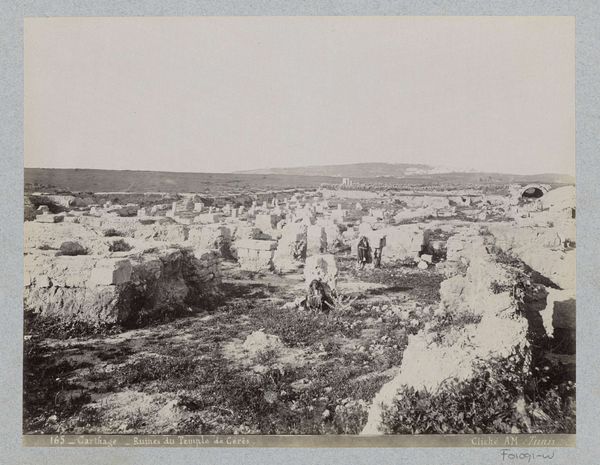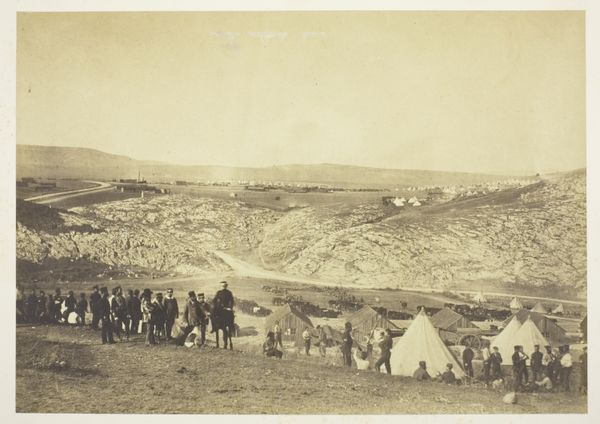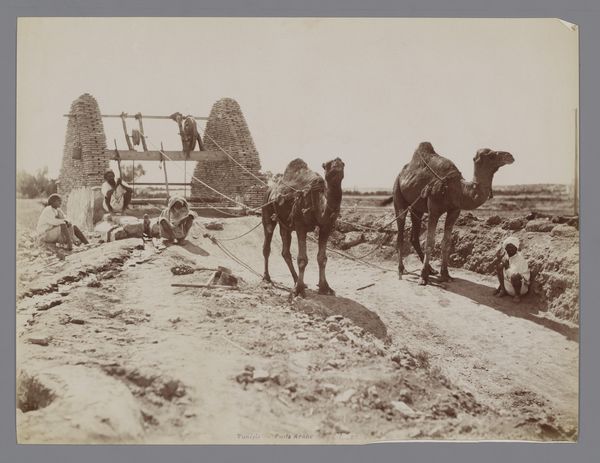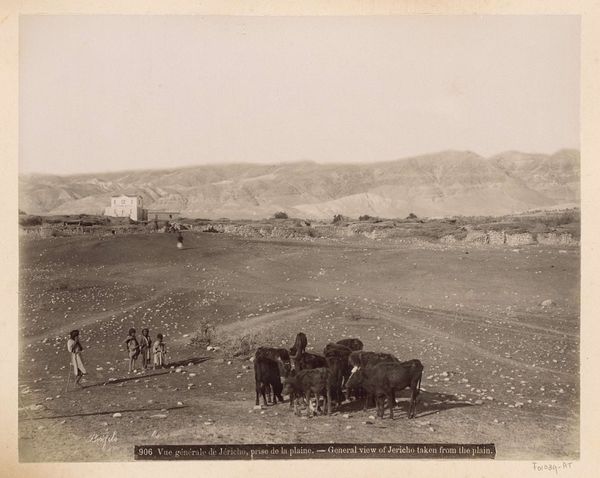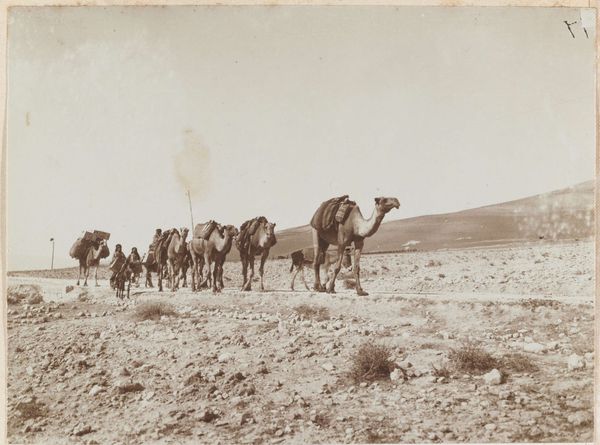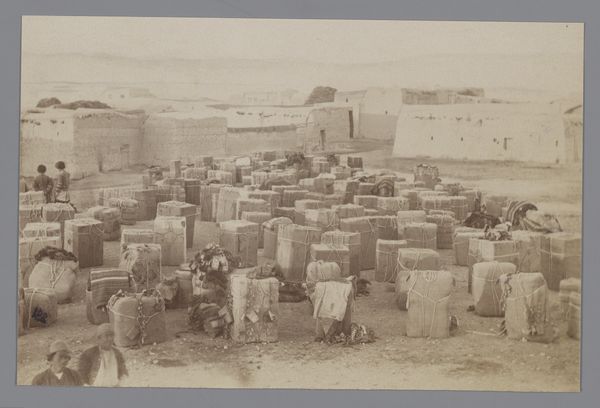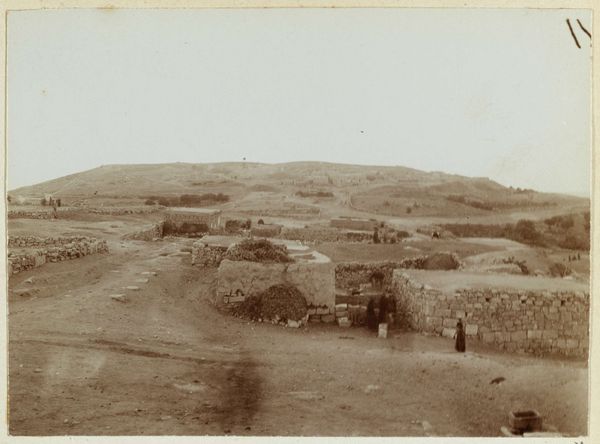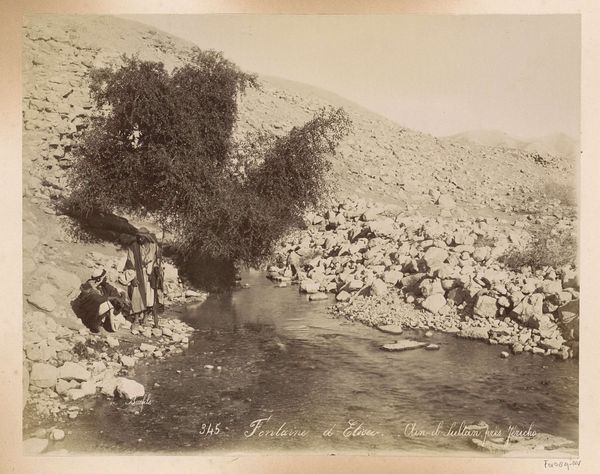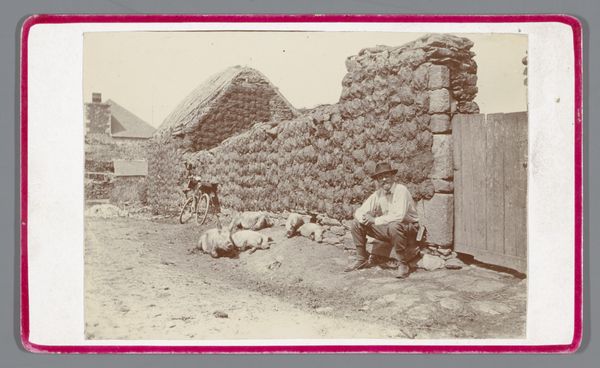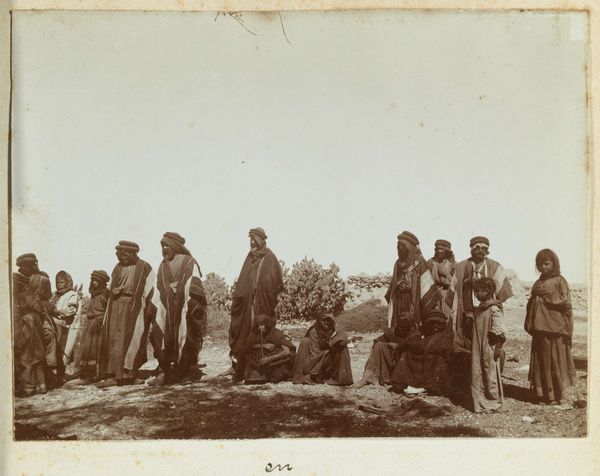
photography, gelatin-silver-print
#
landscape
#
photography
#
orientalism
#
gelatin-silver-print
#
genre-painting
Dimensions: height 79 mm, width 107 mm
Copyright: Rijks Museum: Open Domain
Editor: This gelatin-silver print, “Mensen en dieren bij de waterbron bij Al-Lubban” by Johannes Lodewijk Heldring from 1898, has an almost cinematic feel, like a still from an early film. I notice a clear contrast between the standing figures and the busyness near the water. How do you interpret this photograph within its historical context? Curator: It’s essential to understand this photograph within the context of Orientalism and the colonial gaze. The scene, depicting people and animals around a water source, presents a view of the 'Orient' as timeless and perhaps even exotic. Think about how photography was used during this period. Editor: It’s almost anthropological. Was it meant as documentation? Curator: Precisely. Photography became a tool for European powers to document and classify the people and places they encountered and, in many ways, sought to control. Note the composition; it emphasizes the ‘otherness’ of the subjects, framing them within a specific narrative intended for a European audience. Were these photographs used for tourism, propaganda, or something else? Editor: So, the photograph is not necessarily an objective portrayal, but rather a carefully constructed representation? Curator: Exactly. Images like this contributed to the construction of the “Orient” as a space that was different, underdeveloped, and in need of Western intervention. The everyday scene becomes charged with the power dynamics of the time. The choice to photograph this watering hole suggests not merely a scene of daily life, but also perhaps, a subtle statement on resource management or scarcity, subtly implying a need for external control. Editor: It’s unsettling to consider how a seemingly simple scene is loaded with such historical weight. Thanks, I'll definitely view photographs from that period with much more skepticism now! Curator: Understanding the socio-political context behind images like this enriches our appreciation of photography’s complex role in shaping historical narratives and perceptions.
Comments
No comments
Be the first to comment and join the conversation on the ultimate creative platform.
